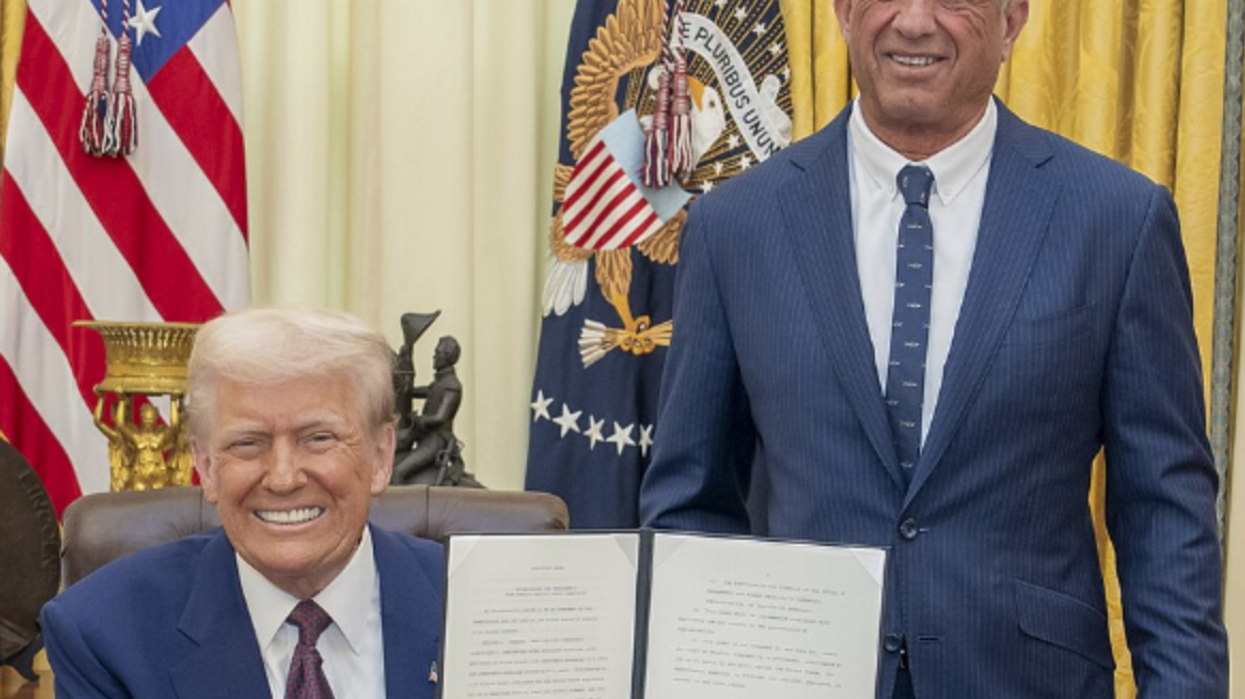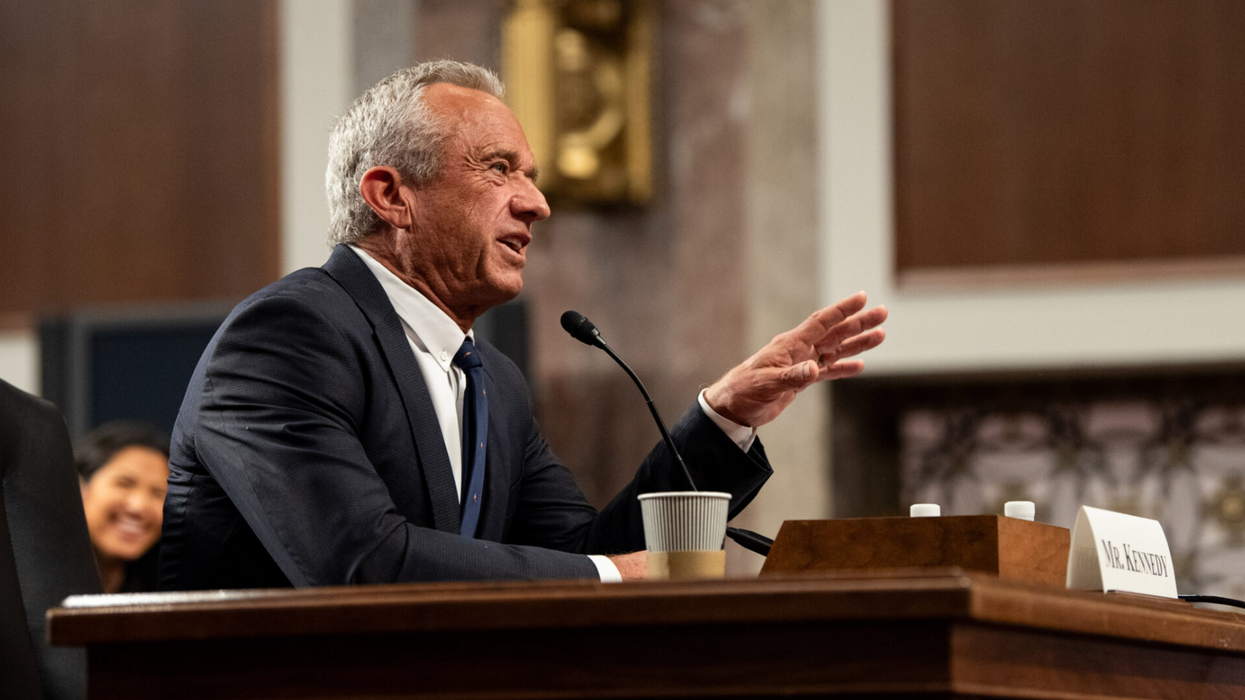The National Institutes of Health’s sweeping cuts of grants that fund scientific research are inflicting pain almost universally across the U.S., including in most states that backed President Donald Trump in the 2024 election.
A KFF Health News analysis underscores that the terminations are sparing no part of the country, politically or geographically. About 40% of organizations whose grants the NIH cut in its first month of slashing, which started Feb. 28, are in states Trump won in November.
The Trump administration has singled out Ivy League universities including Columbia and Harvard for broad federal funding cuts. But the spending reductions at the NIH, the nation’s foremost source of funding for biomedical research, go much further: Of about 220 organizations that had grants terminated, at least 94 were public universities, including flagship state schools in places such as Florida, Georgia, Ohio, Nebraska, and Texas.
The Trump administration has canceled hundreds of grants supporting research on topics such as vaccination; diversity, equity, and inclusion; and the health of LGBTQ+ populations. Some of the terminations are a result of Trump’s executive orders to abandon federal work on diversity and equity issues. Others followed the Senate confirmation of anti-vaccine activist Robert F. Kennedy Jr. to lead the Department of Health and Human Services, which oversees the NIH. Many mirror the ambitions laid out in Project 2025’s Mandate for Leadership, the far-right playbook for Trump’s second term.
Affected researchers say Trump administration officials are taking a cudgel to efforts to improve the lives of people who often experience worse health outcomes — ignoring a scientific reality that diseases and other conditions do not affect all Americans equally.
KFF Health News found that the NIH terminated about 780 grants or parts of grants between Feb. 28 and March 28, based on documents published by the Department of Health and Human Services and a list maintained by academic researchers. Some grants were canceled in full, while in other cases, only supplements — extra funding related to the main grant, usually for a shorter-term, related project — were terminated.
Among U.S. recipients, 96 of the institutions that lost grants in the first month are in politically conservative states including Florida, Ohio, and Indiana, where Republicans control the state government or voters reliably support the GOP in presidential campaigns, or in purple states such as North Carolina, Michigan, and Pennsylvania that were presidential battleground states. An additional 124 institutions are in blue states.
Sybil Hosek, a research professor at the University of Illinois-Chicago, helps run a network that focuses on improving care for people 13 to 24 years old who are living with or at risk for HIV. The NIH awarded Florida State University $73 million to lead the HIV project.
“We never thought they would destroy an entire network dedicated to young Americans,” said Hosek, one of the principal investigators of the Adolescent Medicine Trials Network for HIV/AIDS Interventions. The termination “doesn’t make sense to us.”
NIH official Michelle Bulls is director of the Office of Policy for Extramural Research Administration, which oversees grants policy and compliance across NIH institutes. In terminating the grant March 21, Bulls wrote that research “based primarily on artificial and nonscientific categories, including amorphous equity objectives, are antithetical to the scientific inquiry, do nothing to expand our knowledge of living systems, provide low returns on investment, and ultimately do not enhance health, lengthen life, or reduce illness.”
Adolescents and young adults ages 13 to 24 accounted for 1 in 5 new HIV infections in the U.S. in 2022, according to the Centers for Disease Control and Prevention.
“It’s science in its highest form,” said Lisa Hightow-Weidman, a professor at Florida State University who co-leads the network. “I don’t think we can make America healthy again if we leave youth behind.”
HHS spokesperson Emily Hilliard said in an emailed statement that “NIH is taking action to terminate research funding that is not aligned with NIH and HHS priorities.” The NIH and the White House didn’t respond to requests for comment.
“As we begin to Make America Healthy Again, it's important to prioritize research that directly affects the health of Americans. We will leave no stone unturned in identifying the root causes of the chronic disease epidemic as part of our mission to Make America Healthy Again,” Hilliard said.
Harm to HIV, Vaccine Studies
The NIH, with its nearly $48 billion annual budget, is the largest public funder of biomedical research in the world, awarding nearly 59,000 grants in the 2023 fiscal year. The Trump administration has upended funding for projects that were already underway, stymied money for new applications, and sought to reduce how much recipients can spend on overhead expenses.
Those changes — plus the firing of 1,200 agency employees as part of mass layoffs across the government — are alarming scientists and NIH workers, who warn that they will undermine progress in combating diseases and other threats to the nation’s public health. On April 2, the American Public Health Association, Ibis Reproductive Health, and affected researchers, among others, filed a lawsuit in federal court against the NIH and HHS to halt the grant cancellations.
Two National Cancer Institute employees, who were granted anonymity because they were not authorized to speak to the press and feared retaliation, said its staff receives batches of grants to terminate almost daily. On Feb. 27, the cancer institute had more than 10,800 active projects, the highest share of the NIH’s roughly two dozen institutes and centers, according to the NIH’s website. At least 47 grants that NCI awarded were terminated in the first month.
Kennedy has said the NIH should take a years-long pause from funding infectious disease research. In November 2023, he told an anti-vaccine group, “I’m gonna say to NIH scientists, ‘God bless you all. Thank you for public service. We’re going to give infectious disease a break for about eight years,’” according to NBC News.
For years, Kennedy has peddled falsehoods about vaccines — including that “no vaccine” is “safe and effective,” and that “there are other studies out there” showing a connection between vaccines and autism, a link that has repeatedly been debunked — and claimed falsely that HIV is not the only cause of AIDS.
KFF Health News found that grants in blue states were disproportionately affected, making up roughly two-thirds of terminated grants, many of them at Columbia University. The university had more grants terminated than all organizations in politically red states combined. On April 4, Democratic attorneys general in 16 states sued HHS and the NIH to block the agency from canceling funds.
Researchers whose funding was stripped said they stopped clinical trials and other work on improving care for people with HIV, reducing vaping and smoking rates among LGBTQ+ teens and young adults, and increasing vaccination rates for young children. NIH grants routinely span several years.
For example, Hosek said that when the youth HIV/AIDS network’s funding was terminated, she and her colleagues were preparing to launch a clinical trial examining whether a particular antibiotic that is effective for men to prevent sexually transmitted infections would also work for women.
“This is a critically important health initiative focused on young women in the United States,” she said. “Without that study, women don’t have access to something that men have.”
Other scientists said they were testing how to improve health outcomes among newborns in rural areas with genetic abnormalities, or researching how to improve flu vaccination rates among Black children, who are more likely to be hospitalized and die from the virus than non-Hispanic white children.
“It's important for people to know that — if, you know, they are wondering if this is just a waste of time and money. No, no. It was a beautiful and rare thing that we did,” said Joshua Williams, a pediatric primary care doctor at Denver Health in Colorado who was researching whether sharing stories about harm experienced due to vaccine-preventable diseases — from missed birthdays to hospitalizations and job loss — might inspire caregivers to get their children vaccinated against the flu.
He and his colleagues had recruited 200 families, assembled a community advisory board to understand which vaccinations were top priorities, created short videos with people who had experienced vaccine-preventable illness, and texted those videos to half of the caregivers participating in the study.
They were just about to crack open the medical records and see if it had worked: Were the group who received the videos more likely to follow through on vaccinations for their children? That’s when he got the notice from the NIH.
“It is the policy of NIH not to prioritize research activities that focuses gaining scientific knowledge on why individuals are hesitant to be vaccinated and/or explore ways to improve vaccine interest and commitment,” the notice read.
Williams said the work was already having an impact as other institutions were using the idea to start projects related to cancer and dialysis.
A Hit to Rural Health
Congress previously tried to ensure that NIH grants also went to states that historically have had less success obtaining biomedical research funding from the government. Now those places aren’t immune to the NIH’s terminations.
Sophia Newcomer, an associate professor of public health at the University of Montana, said she had 18 months of work left on a study examining undervaccination among infants, which means they were late in receiving recommended childhood vaccines or didn’t receive the vaccines at all. Newcomer had been analyzing 10 years of CDC data about children’s vaccinations and had already found that most U.S. infants from 0 to 19 months old were not adequately vaccinated.
Her grant was terminated March 10, with the NIH letter stating the project “no longer effectuates agency priorities,” a phrase replicated in other termination letters KFF Health News has reviewed.
“States like Montana don’t get a lot of funding for health research, and health researchers in rural areas of the country are working on solutions to improve rural health care,” Newcomer said. “And so cuts like this really have an impact on the work we’re able to do.”
Montana is one of 23 states, along with Puerto Rico, that are eligible for the NIH’s Institutional Development Award program, meant to bolster NIH funding in states that historically have received less investment. Congress established the program in 1993.
The NIH’s grant terminations hit institutions in 15 of those states, more than half that qualify, plus Puerto Rico.
Researchers Can’t ‘Just Do It Again Later’
The NIH’s research funds are deeply entrenched in the U.S. health care system and academia. Rarely does an awarded grant stay within the four walls of a university that received it. One grant’s money is divvied up among other universities, hospitals, community nonprofits, and other government agencies, researchers said.
Erin Kahle, an infectious disease epidemiologist at the University of Michigan, said she was working with Emory University in Georgia and the CDC as part of her study. She was researching the impact of intimate partner violence on HIV treatment among men living with the virus. “They are relying on our funds, too,” she said.
Kahle said her top priority was to ethically and safely wind down her nationwide study, which included 418 people, half of whom were still participating when her grant was terminated in late March. Kahle said that includes providing resources to participants for whom sharing experiences of intimate partner violence may cause trauma or mental health distress.
Rachel Hess, the co-director of the Clinical & Translational Science Institute at the University of Utah, said the University of Nevada-Reno and Intermountain Health, one of the largest hospital systems in the West, had received funds from a $38 million grant that was awarded to the University of Utah and was terminated March 12.
The institute, which aims to make scientific research more efficient to speed up the availability of treatments for patients, supported over 5,000 projects last year, including 550 clinical trials with 7,000 participants. Hess said that, for example, the institute was helping design a multisite study involving people who have had heart attacks to figure out the ideal mix of medications “to keep them alive” before they get to the hospital, a challenge that’s more acute in rural communities.
After pushback from the university — the institute’s projects included work to reduce health care disparities between rural and urban areas — the NIH restored its grant March 29.
Among the people the Utah center thanked in its announcement about the reversal were the state’s congressional delegation, which consists entirely of Republican lawmakers. “We are grateful to University of Utah leadership, the University of Utah Board of Trustees, our legislative delegation, and the Utah community for their support,” it said.
Hilliard, of HHS, said that “some grants have been reinstated following the appeals process, and the agency will continue to carry out the remaining appeals as planned to determine their alignment.” She declined to say how many had been reinstated, or why the University of Utah grant was among them.
Other researchers haven’t had the same luck. Kahle, in Michigan, said projects like hers can take a dozen years from start to finish — applying for and receiving NIH funds, conducting the research, and completing follow-up work.
“Even if there are changes in the next administration, we’re looking at at least a decade of setting back the research,” Kahle said. “It’s not as easy as like, ‘OK, we’ll just do it again later.’ It doesn’t really work that way.”
Methodology
KFF Health News analyzed National Institutes of Health grant data to determine the states and organizations most affected by the Trump administration’s cuts.
We tallied the number of terminated NIH grants using two sources: a Department of Health and Human Services list of terminated grants published April 4; and a crowdsourced list maintained by Noam Ross of rOpenSci and Scott Delaney of the Harvard T.H. Chan School of Public Health, as of April 8. We focused on the first month of terminations: from Feb. 28 to March 28. We found that 780 awards were terminated in total, with 770 of them going to recipients based in U.S. states and two to recipients in Puerto Rico.
The analysis does not account for potential grant reinstatements, which we know happened in at least one instance.
Additional information on the recipients, such as location and business type, came from the USAspending.gov Award Data Archive.
There were 222 U.S. recipients in total. At least 94 of them were public higher education institutions. Forty-one percent of organizations that had NIH grants cut in the first month were in states that President Donald Trump won in the 2024 election.
Some recipients, including the University of Texas MD Anderson Cancer Center and Vanderbilt University Medical Center, are medical facilities associated with higher education institutions. We classified these as hospitals/medical centers.
We also wanted to see whether the grant cuts affected states across the political spectrum. We generally classified states as blue if Democrats control the state government or Democratic candidates won them in the last three presidential elections, and red if they followed this pattern but for Republicans. Purple states are generally presidential battleground states or those where voters regularly split their support between the two parties: Arizona, Michigan, Nevada, New Hampshire, North Carolina, Pennsylvania, Virginia, and Wisconsin. The result was 25 red states, 17 blue states, and eight purple states. The District of Columbia was also blue.
We found that, of affected U.S. institutions, 96 were in red or purple states and 124 were in blue states.
Reprinted with permission from Daily Kos.












